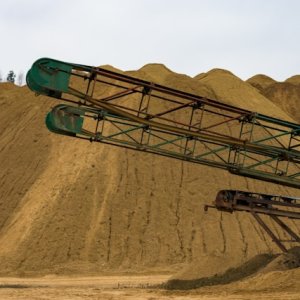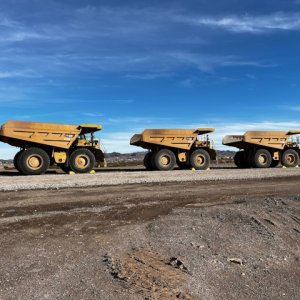Financial Guarantees for the Closure of Mines

STORY INLINE POST
There have been a number of published articles and reports in Mexico this year and in 2021 on the topic of mine closures and mining sites . The main publication that appears in a quick internet search is, “And after the mine, what? Towards a mine closure policy” (Heinrich Boll Stiftung & Engenera, 2021). This publication recommends moving toward a public policy on the closure of mines to take into consideration the technical and social aspects of the mining site. SEMARNAT already has an inventory of tailings dams, which is good progress.
The challenge, when a mineral deposit is depleted and it is no longer economically viable to continue operating, is the rehabilitation of the surrounding areas that were impacted and the dismantling of industrial facilities. Mining usually leaves a mark in the places where minerals were extracted, whether superficial or underground, in the areas where the rocks that have no commercial value are deposited and in the areas where the crushed mineral residues from which they were extracted are deposited. This stage in a mine life is known as the closure and rehabilitation stage.
In the closure and rehabilitation stage, in addition to dismantling the facilities, it is necessary to rehabilitate the affected areas so that they recover the type of vegetation that existed before starting; excavations and promontories (waste accumulation) must be secured so that they do not represent a threat due to instability of the slopes or a risk of chemical contamination, which can be generated by rocks that were previously within the Earth's crust and now are exposed to weather like rain and oxygen in the air.
International good practice requires that companies, from an early stage —when the mine pre-feasibility studies are carried out — prepare what is known as a “Mine Closure Plan.” This document has the purpose of developing the initial concept to close the mine and rehabilitate the intervened areas, as well as estimate the cost of these activities, since it is an amount that must go into the financial evaluation. This is a serious process, which is normally carried out by an independent consulting company, and which must be updated periodically. Some sustainability standards require it to be updated every five years. Decisions should be made in the closure plan on how each structure is planned to be secured, whether the pit, underground mine, tailings dam, material deposits of no commercial value, etc. Mining operations change as they progress. They typically expand, occupy more area, extract more ore, and generate more waste. All of these changes have an impact on the amount that must be allocated for closure and reclamation. Some countries require the preparation of a mine closure plan, or it is required by the financial entities that have contributed funds to build the mine. It is also very common for it to be required by environmental sustainability standards. Whichever way you look at it, it becomes mandatory within the formal economy.
All of this work in the closure and reclamation stage has to be carried out, almost all of it, at the end of the operational life of the mine, when the company no longer has income, and the budget required to carry out this work may reach several million dollars and can take anywhere from three to 10 years. Some companies that operate several mines at the same time do not see it as difficult, because they have income from the other mines. But not all mining companies have multiple mines, or have set aside the necessary funds to carry out this task. International companies usually have an internal fund, which accumulates as the tasks associated with closure and rehabilitation increase, and is reduced if there is any progress.
However, not everything always works in an orderly and smooth fashion. It is also common for mining companies to face bankruptcies, due to bad decisions, a drop in the price of metals, an increase in the price of oil or electricity, lawsuits, fines, international sanctions that are in fashion lately, etc. For this reason, in some countries, it has been established in the legal framework that companies must establish a financial instrument that serves to cover closure and rehabilitation costs, and that is not affected if the company has financial problems. If the company manages to carry out the closing and rehabilitation, then, it recovers the amount placed in the financial instrument. The financial instruments must then be independent of the company, immediately available, and in favor of the entity that executes the closure and rehabilitation tasks. This type of financial instrument is preferred because it guarantees that the money is available from the time the mine begins its operation, and it is not affected if there is a bankruptcy.
However, there are other countries where it is considered acceptable for the same company to present a self-guarantee. In some countries, the self-guarantee is an accounting management, which provides a specific amount, as if it were an expense, and subtracts it from the profit. So when profits are distributed to shareholders, that amount earmarked for the rehabilitation and closing phase is not affected. To determine if the company can count on a self-guarantee, some ideas can be borrowed from how they do it in the US or Canada. This self-guarantee is supported by the declaration of an independent auditor who must review the most recent financial statements of the company and perform an evaluation known as the "Financial Test" to determine that the level of financial strength of the company can cover the expenses of closure and rehabilitation. The evaluation must be based on an accepted financial evaluation methodology, such as those described in the US Code of Federal Regulations, at 40 CFR 264.143(f), 30 CFR 800.23, 10 CFR 30, Appendix A, or at Sections 13 through 20 of Ontario Regulations 240/00, Mineral Development and Closure, under Part VII of the Ontario Mining Act.
In my opinion, the mine closure policy, which is pending in Mexico, should be specified in an environmental regulation that requires preparing a mine closure plan that must be updated periodically, and that establishes the obligation to have a liquid financial instrument, independent of the company, to cover mine closure expenses








 By Adrián Juárez | CEO -
Mon, 01/02/2023 - 11:00
By Adrián Juárez | CEO -
Mon, 01/02/2023 - 11:00















